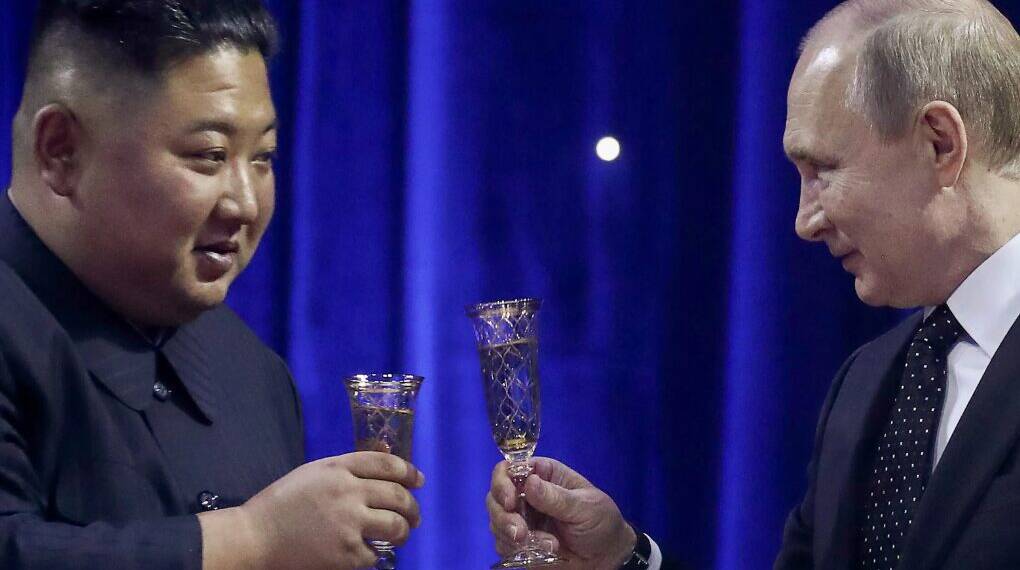The trajectory of the war in Ukraine may be entering a new, more dangerous phase as military intelligence chief Kyrylo Budanov reveals that up to 40% of Russia’s ammunition is now being supplied by North Korea. This previously unthinkable military-industrial alliance—between two isolated nations—underscores the emergence of a new geopolitical reality, one in which the global lines of influence are being rapidly redrawn.
A Growing Moscow-Pyongyang Military Nexus
According to reports, North Korea has exchanged ballistic missiles and artillery systems for cash and advanced technology from Russia, deepening cooperation that formally escalated with the signing of the Comprehensive Strategic Partnership Treaty between Kim Jong Un and Vladimir Putin in June 2024.
This relationship, once limited to symbolic diplomatic overtures, has evolved into a robust logistical lifeline for the Russian military, providing not only ammunition but also troops, as some Ukrainian and Western reports suggest. This is the most substantial foreign military support Russia has received in the war, aside from its reliance on Iranian drones and Chinese dual-use components.
If Budanov’s figures are accurate, North Korea is no longer a marginal player but a core supplier sustaining Russian firepower in Ukraine—an alarming prospect for Kyiv and its allies. It also positions Pyongyang as a more significant disruptor in global security than previously acknowledged.
Strategic Trade-Offs: What Does North Korea Get?
This partnership is transactional at its core. North Korea’s exports of ammunition and ballistic systems—products of its longstanding military industrial base—appear to be rewarded not just with money but with access to Russian technology, which could potentially enhance Pyongyang’s own nuclear and missile capabilities.
This tech-for-guns exchange raises concerns in Washington, Seoul, and Tokyo. Russia’s desperation to maintain its war effort may result in North Korea making long-term strategic gains, including nuclear miniaturization technologies or satellite systems it has long coveted. Such a development could upset the military balance in East Asia, accelerating arms races and hardening alliances.
A Ceasefire or a Stalemate?
Despite this deepening axis, Budanov remains hopeful. He has signaled that a ceasefire is possible before the end of 2025, contingent on trilateral consensus between Ukraine, Russia, and the United States. However, this optimism is set against the backdrop of record Russian drone strikes—728 launched on July 9 alone—and a civilian death toll not seen in three years.
Putin’s recent declaration to Donald Trump that Russia “will not back down” contrasts with renewed American commitment to Kyiv. Trump has ordered the resumption of weapons shipments to Ukraine, including advanced air defense systems, and described Putin’s gestures toward peace as “meaningless.”
The apparent contradiction between calls for a ceasefire and escalatory actions from both sides suggests that the window for diplomacy is narrow and will likely require external pressure—primarily from Washington—to succeed.
U.S. Leverage and the Future of Aid
Budanov’s confidence in continued U.S. support, despite Trump’s prior skepticism about long-term involvement, reflects Ukraine’s belief that American defense and financial backing remain crucial. With global focus increasingly shifting to the Indo-Pacific and the Israeli Palestinian conflict, Ukraine must reassert its relevance to U.S. strategic priorities.
Trump’s return to office—if confirmed—could complicate that outlook. His transactional foreign policy, combined with pressure from the Republican base, may demand clearer “returns” on support for Ukraine. However, Russia’s alignment with nation like North Korea and Iran might force Trump to adopt a harder stance than anticipated.
A Multipolar Challenge to Global Security
What’s emerging is a de facto anti-Western bloc—Russia, North Korea, Iran—whose cooperation is no longer ideological but logistical, grounded in shared survival and mutual benefit. Their integration represents a challenge not just to Ukraine but to Western credibility in managing security crises.
For Ukraine, maintaining the world’s attention—and weapons flow—amid growing global fatigue and multiple crises will be vital. Budanov’s assertion that “Ukraine is a country of opportunities” speaks not just to his personal hopes, but to the broader national sentiment: that victory, or at least stability, is still within reach—but only if external alliances hold strong and adversaries’ unity begins to fray.
Ukraine’s war is increasingly shaped by actors far from its borders. As Russia turns eastward for support, the West must assess whether it’s prepared for a prolonged geopolitical contest—one that spans not only Europe but also the nuclear-capable rogue states of East Asia. The conflict is no longer just about Ukrainian sovereignty—it’s about the architecture of global power in the 21st century.








